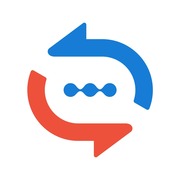
Best Translation Tools 2025
Translation tools automate the translation of marketing materials and web content so that they may be read in other languages.
We’ve collected videos, features, and capabilities below. Take me there.
All Products
Learn More about Translation Software
What are Translation Tools?
Translation Tools automate the translation of text in enterprise content so that it may be read in other languages. The software is often used to support localization in global marketing campaigns. Additionally, they may be deployed to automate translation in backend systems, technical documents, or other sources of text. Some more advanced translation platforms also employ artificial intelligence (AI) technology to provide real-time translation services for things like live conversations.
In addition to automatic translation, sophisticated localization platforms provide means to edit and review translations for correctness. Beyond merely automating translation of text, translation software can provide a means to create helpful aids. These can include glossaries, termbases, or style guides. This helps ensure that localized marketing content is still brand consistent.
Also, many translation platforms provide software alongside human translators, available freelance through their platform as a service. Translations tools are employed across a wide variety of industries. The travel industry, gaming, media, and financial institutions, as well as other global industries, require extensive solutions.
Translation Software for Customer Service
One area in which translation tools and services are becoming increasingly important is customer service. For multinational corporations that operate around the globe, being able to support their customers and users in their native language is critical.
Improving the translations used in customer service or support departments can include a range of activities:
- enabling real-time conversations with users in different languages
- translating and localizing help desk content and other documentation
- building a chatbot that can converse in multiple languages
- translating chat or email messages for agents
- improving the quality of translations over time
Here some examples of products that offer a translation services and technology for the customer service industry:
Features of Translation Tools & Localization Platforms
Translation tools generally provide the following features:
- Prepackaged and/or configurable CAT tool (computer-assisted translation)
- Translation environment, editor, and change review interface
- Translation automation based on definable rules
- Multiple means of translation (e.g. automated, crowdsourcing, freelance expert, etc.)
- Content management workflow, or integration with CMS
- In-context, overlay editor, preview changes & check for formatting errors
- Translated file & content hosting
- Terminology management: glossary, termbase, style guide, other guidance
- Localization testing (e.g. e.g. understandability, appropriateness, etc.)
- Freelance translator workforce hiring & management
- Translation project management space with collaboration tools, task management, messaging
- Translator quoting, invoicing, payment management
- Reporting on word count & untranslated words, translation issue management
- Translation memory (reusable translations)
- Business intelligence & analytics, track financial impact of translated materials, success or failure of localization
Translation Tools Comparison
When choosing a translation tool or service to invest in, there are a few key points to consider:
- Type of tool: Some translation software products offer primarily automated translation. On the other hand, some translation services are 100% human powered. Others blend the two approaches together. Which model will fit your business needs best? For more casual translation needs, automated translation may be ideal (and cheaper). But translating more complex topics or sensitive subject matter will likely require a human-powered or blended approach.
- Cost structure: Are you looking for a translation tool to aid with one-off translations? Or will you be translating files, recordings, or messages frequently? Some translation tools or services charge per word, while others offer a subscription price for up to a certain number of words. The latter pricing model will likely work better for users that will be using translation software more routinely.
Pricing Information
Because translation often involves the use of freelancers pricing varies by volume of text to be translated. Also hiring rates may vary country-by-country, language-by-language. The translation software itself is predominately available as a service (SaaS), via a subscription.
Higher priced tiers support larger teams of contractors, larger volume of translation memory, or other advanced features. Advanced features available on higher cost plans are advanced analytics, translation quality assessment, and more advanced machine translation. Additionally, localization platform vendors supply dedicated customer support and advanced API for higher tier customers.
Translation FAQs
What do translation tools do?
What’s the difference between translation software and translation services?
Automatic translation software provides computer-generated translations using a system of linguistic rules and dictionaries for different languages. However, these computer-generated translations can often sound a bit strange if they’ve been directly translated into a different language. Localization software helps ensure the translation is adapted to the local language and culture.
Translation services are typically provided by human translators for a set fee. These are typically the highest quality translations, as they are often done by a native speaker.
Which translation tool is the best?
According to end-user feedback on TrustRadius, some of the most popular translation tools (by the number of reviews they have) are:
























